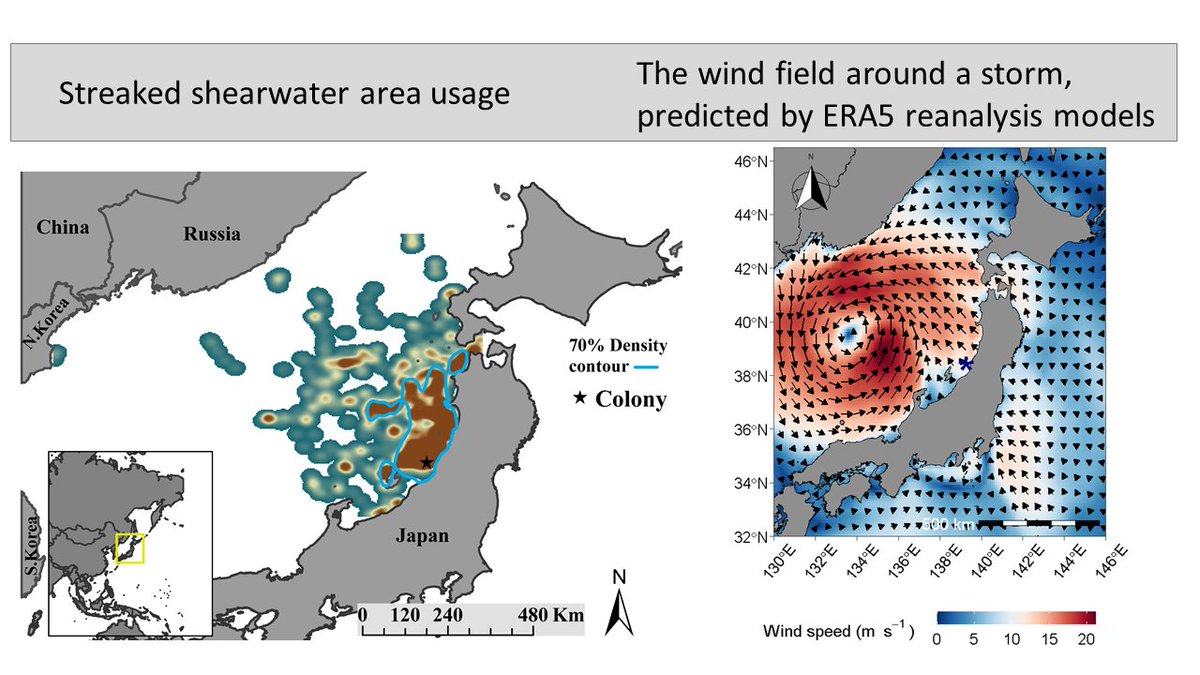1/6 #BOUsci20 #Brk5 With increasing #storm frequency and intensity, we need to understand how #seabirds negotiate extreme winds in #typhoons. However, little is known about how birds respond. #ornithology @ELCShepard @AndrewRoss @MovingAnimals Ken Yoda @ERC_Research
2/6 #BOUsci20 #Brk5 We tracked streaked shearwaters foraging in the Sea of Japan with GPS to assess how they responded to 5 storms (n = 55 birds, 690 h). As storms can affect the entire Sea, birds will have to respond to extreme winds while operating relatively close to land
3/6 #BOUsci20 #Brk5 Streaked shearwaters flew under all wind speeds and, to our surprise, some of them even flew towards the storm eye, taking them into the strongest winds. See animation of bird tracks (coloured) during #typhoon #Cimaron (red track)
4/6 #BOUsci20 #Brk5 Using GAMMs we showed that birds tend to fly towards the eye as the wind strength increased. But GPS data revealed they never chased a storm if that would have taken them closer to land
5/6 #BOUsci20 #Brk5 Agent-based models programmed with the birds’ response to wind highlighted a strong attraction to the eye of 3 storms (see animation for #Talim). A significant % of agents ended up over land in 1 storm, but agents had no info about the whereabouts of land
6/6 #BOUsci20 #Brk5 This demonstrates the importance of navigating with respect to both wind and land. Here, this seems to have led to a remarkable strategy with shearwaters minimizing risks by chasing the eye of the storm to avoid the high onshore winds #ornithology

 Read on Twitter
Read on Twitter




